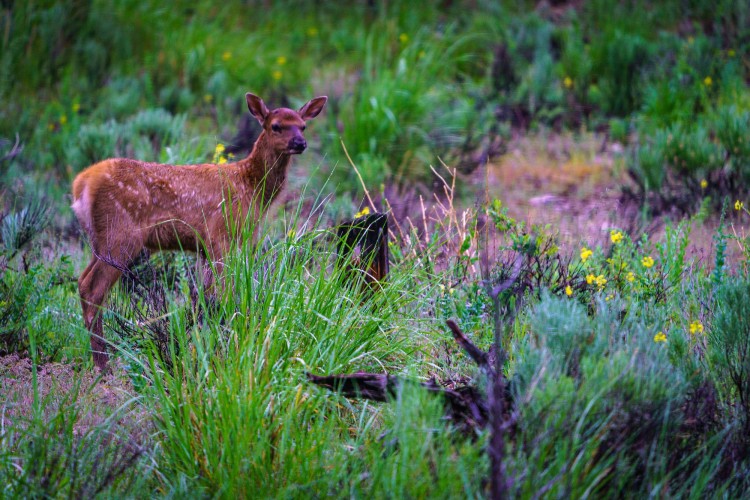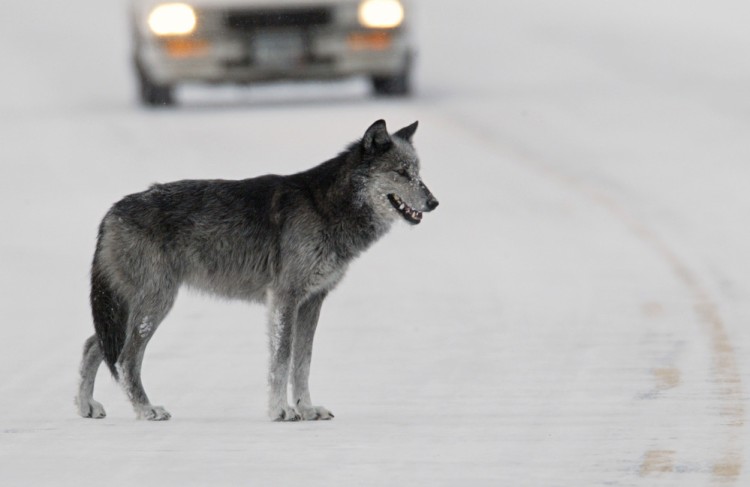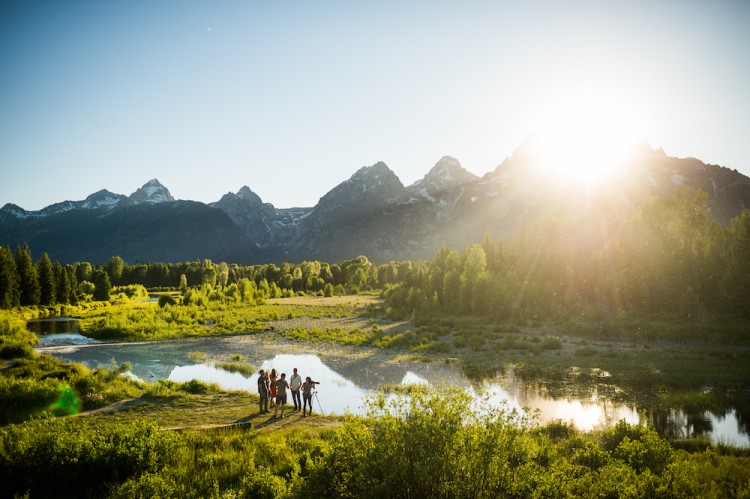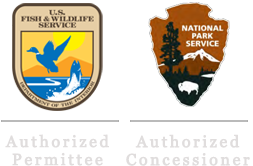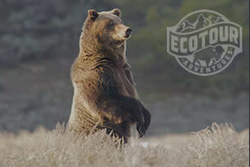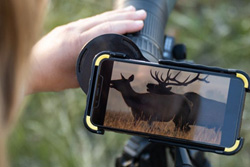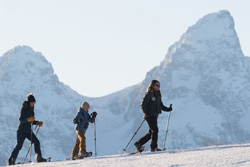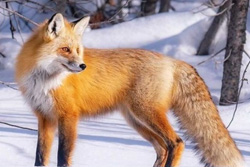Species Profile: Bison
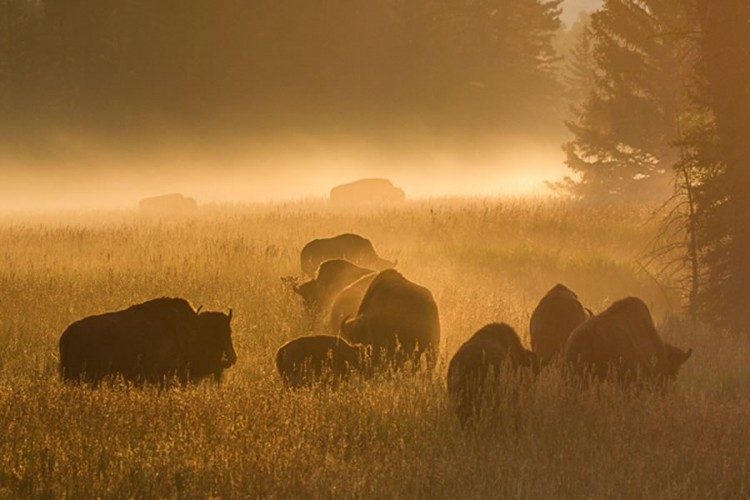

“I asscended to the top of the cutt bluff this morning, from whence I had a most delightfull view of the country, the whole of which except the vally formed by the Missouri is void of timber or underbrush, exposing to the first glance of the spectator immence herds of Buffaloe, Elk, deer, & Antelopes feeding in one common and boundless pasture.” from the Journal of Merriweather Lewis April 22nd 1805
Common and boundless pasture were the words used by Lewis to describe the habitat of bison, who were equally as abundant at the time. Once estimated in numbers of 30-60 million, in herds which “darkened the whole plains” (Lewis and Clark), bison were approaching extinction by the late 1800’s. Today this charismatic megafauna has rebounded and is a frequent sight in both Grand Teton and Yellowstone National Parks.
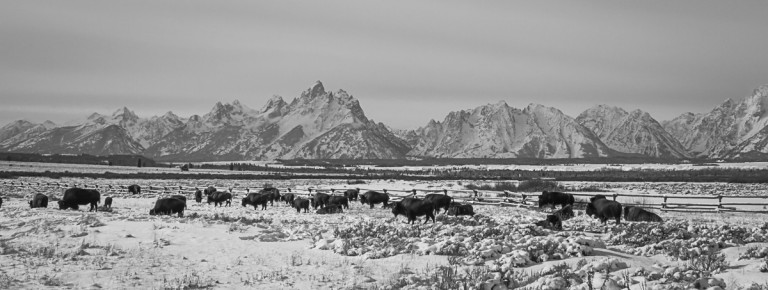
Spring: Bison Calves Arrive in Yellowstone
In late April and early May, the first new bison calves of the year appear, beginning in the Lamar valley of Yellowstone. Knowing nothing of their near extinction just over a century ago, calves play and run in the spring grasses. They keep close to protective mothers, distinguished by horns which curve inward. Mature male bison, weighing close to one ton, have larger horns which stick up vertically from the side of the head. Bison calves are often called “red dogs” due to their size, reddish color and playful nature.
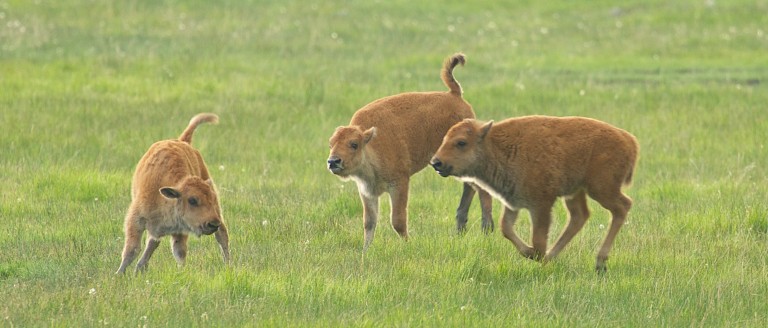
Bison herds are led by dominant matriarchs, with large bulls often forming separate bachelor groups. They frequently make and use bison wallows, which are large bare patches of compacted soil the bison use to scent mark and perhaps rid themselves of pests. Trees in high traffic areas are also subject to rubbing and become polished smooth. Bison can travel at 35 miles per hour and though they look docile are the most dangerous animal in the parks, having gored five people last summer. It is easy to avoid an altercation however by giving bison space and not approaching them.
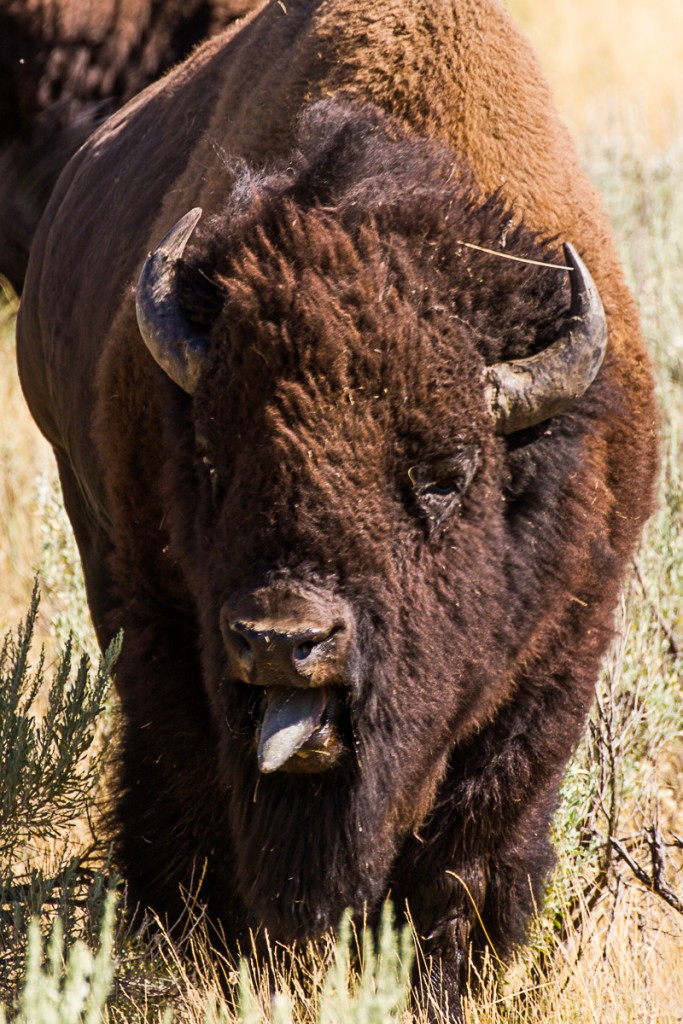
A bull bison bellows during the rut or mating season. Photo: Josh Metten
A Keystone Species
Young bison grow into an important multifaceted role in the Greater Yellowstone ecosystem. Herbivores are important nutrient cyclers; their digestive system acts as a decomposer, fertilizing prairie soils with manure. This is a critical benefit in an area where decomposition is so slow that trees burned by the 1988 Yellowstone fires are still standing. As they graze in grassland areas like the Hayden Valley, bison herds are followed by brown headed cowbirds, who feed off of insects attracted to the bison or stirred up by their movements. Since cowbirds are off following the herds they can’t be bothered by raising chicks of their own. Using a strategy known as brood parasitism, they lay eggs in other birds nests. Cowbird chicks are then raised by surrogate parents who are often much smaller then they are!
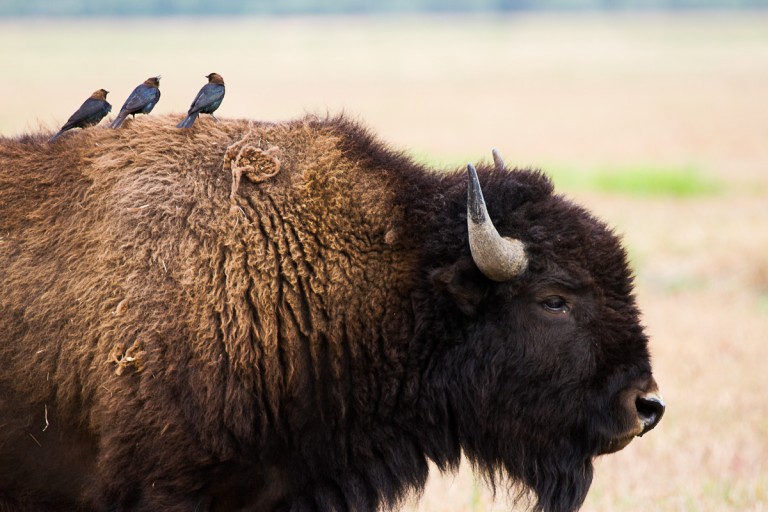
Cowbirds ride a bison in Grand Teton National Park. Photo: Josh Metten
A Dark Past and Hopeful Future
The destruction of North America’s bison herds is undoubtedly a dark moment in the history of the United States. Widespread across the U.S., Canada, and even northern Mexico, they were exterminated to create space for homesteaders, railroads, and facilitate the relocation of Native American tribes. Eventually little was left but bleached bones, which were then collected to be shipped east for fertilizer.
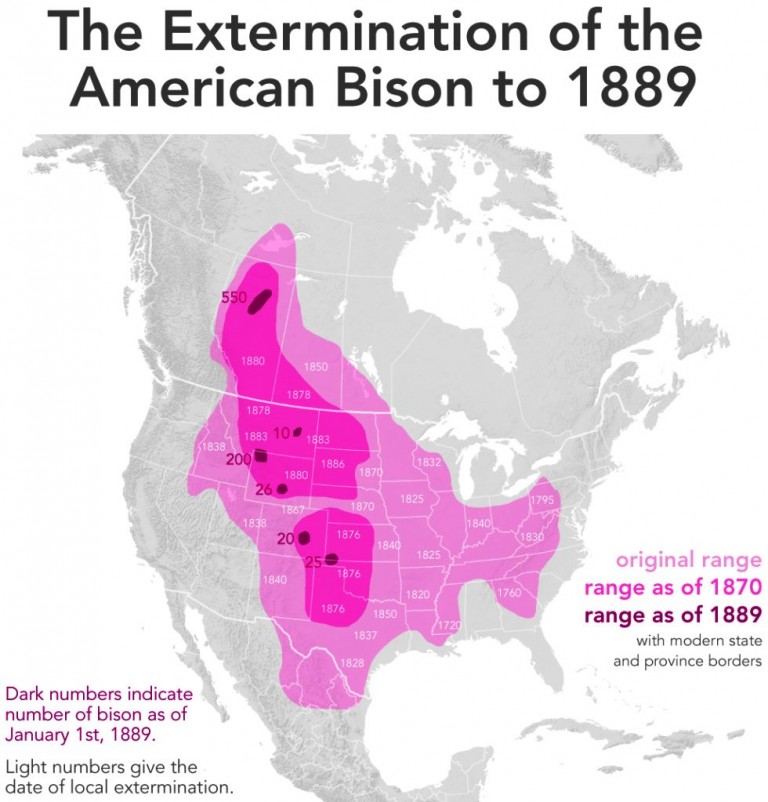
By 1901, even bison in Yellowstone National Park, founded nearly three decades before, had been nearly wiped out. Only 25 were counted that year, spurring congress to allocate $15,000 to purchase bison to increase the herd. The Lamar Bison Ranch was born. Bison were bred in captivity and released to expand the wild herd until the mid 1900’s. Today bison in Yellowstone number over 4000 animals, with animals increasingly being moved to reestablish wild herds elsewhere in the country.
It is unlikely we will ever see the herds viewed by Lewis and Clark as they explored the frontier in the early 1800’s but nature has a way of persisting. The bison herd we see today on our wildlife tours of Grand Teton National Park began as a herd of 15 bison who escaped a fenced wildlife park near Oxbow Bend in 1968. The Park Service allowed the herd to roam free and it now numbers over 500 animals. With bison now our National Mammal and efforts underway to return the animals to Native American Reservations and other habitats, we're hopeful for the continued recovery of this iconic species. The world needs more bison.
Josh Metten has spent his entire life exploring and living in the Rocky Mountains of Colorado and Wyoming. He is an Ecotour Adventures Naturalist, photographer, conservationist, and outdoor enthusiast. Josh lives in Jackson, WY.
Eco Tour Adventures was created with the idea of helping people connect with the natural world through wildlife observation and natural history interpretation. We believe that when one is more familiar with the intricate workings of the ecosystem, he or she has a deeper appreciation and connection with their environment. Join us on an adventure today!




